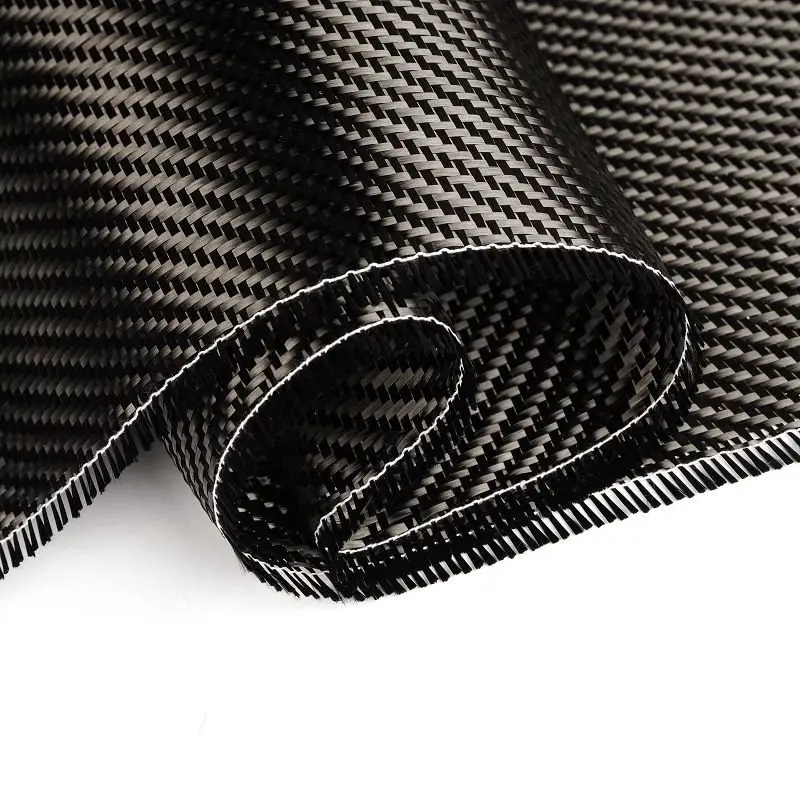When it comes to carbon fiber, two primary variants exist: wet and dry carbon fiber. Both methods significantly impact the properties of final products like carbon fiber tubes. These variants differ in manufacturing processes, appearance, strength, and cost. Here's a breakdown of the key dissimilarities between wet and dry carbon fiber:
Wet Carbon Fiber
Wet carbon fiber is so named not due to its appearance but because of its manufacturing process. It is created by laying carbon fiber sheets into a mold and mixing them with resin, typically producing a glossy finish. This method is also known as the “wet layup” process. The resin is applied to the carbon fiber sheets by hand, and the excess is squeezed out using a roller or squeegee. The mold is then left to cure, and the excess material is trimmed away. The result is a glossy, smooth finish that is often used in cosmetic applications.
However, the wet layup process can lead to air pockets and a weaker structure, making it less strong and heavier than dry carbon fiber. Wet carbon fiber is also more affordable than its dry counterpart, making it a popular choice for cosmetic applications where strength is not a primary concern.
Dry Carbon Fiber
On the other hand, dry carbon fiber is made by coating each specific weave with an appropriate amount of epoxy while it's being made before it has been set or cured. This process is also known as the “prepreg” process. The carbon fiber is pre-impregnated with resin, and the excess is removed using a machine. The material is then placed in a mold and cured under heat and pressure in an autoclave. This process optimizes its strength, limits the amount of unnecessary epoxy in the structure, and significantly reduces its weight. Dry carbon fiber is more expensive but is around 70% lighter and stronger than wet carbon fiber. Its surface has a “dry” look due to the strict quality control in its manufacturing process.
A Quick Comparison
- Cost: Wet carbon fiber is less expensive to produce, while dry carbon fiber is more costly due to prepreg fiber and the need for an autoclave.
- Strength: Dry carbon fiber is stronger, as the autoclave process eliminates air bubbles and other impurities, unlike the wet process.
- Weight: Dry carbon fiber is significantly lighter than wet carbon fiber.
Here's a table comparing the advantages and disadvantages of dry and wet carbon fiber:
|
Dry Carbon Fiber |
Advantages |
Disadvantages |
|
Strength-to-Weight Ratio |
Exceptional strength-to-weight ratio, making it incredibly strong while remaining lightweight |
Complex manufacturing process requiring specialized equipment and expertise, making it more complex and expensive |
|
Precision and Consistency |
Allows for precise control over fiber orientation, resulting in consistent and uniform parts |
Limited shape complexity, making it challenging to create complex shapes |
|
Low Resin Content |
Typically has lower resin content compared to wet layup, contributing to lighter finished products |
Higher material costs due to more expensive raw materials |
|
Less Curing Time |
The curing process can be faster due to the absence of excess resin, resulting in quicker production times |
|
|
Processes can be more environmentally friendly, using less resin and producing less waste compared to wet layup methods |
|
Wet Carbon Fiber |
Advantages |
Disadvantages |
|
Versatility in Shapes |
More adaptable to complex shapes and contours, allowing for greater design versatility |
Higher weight due to higher resin content, leading to slightly higher weight compared to dry carbon fiber |
|
Lower Initial Costs |
Equipment required for wet layup processes is generally less expensive compared to the specialized machinery needed for dry carbon fiber production |
Quality consistency can be more challenging to achieve due to variations in resin application and fiber alignment |
|
Ease of Repair |
Repairing parts can be more straightforward as the resin can be reapplied more easily compared to dry carbon fiber |
Longer curing times, extending production timelines |
Choosing between wet and dry carbon fiber depends on specific requirements. Wet carbon fiber is suitable for those seeking the “carbon look” at a lower cost, while dry carbon fiber is ideal for applications where weight and strength are critical despite being more expensive. Each type has advantages and limitations, and choosing the right one depends on the specific needs of the projects or carbon fiber products. For example, wet carbon fiber may be suitable for cosmetic applications such as interior trim pieces. In contrast, dry carbon fiber may be more appropriate for high-performance applications such as race car components or aerospace structures.
In conclusion, both wet and dry carbon fiber have their place in various industries. By understanding the differences between the two, you can make an informed decision when choosing the right type of carbon fiber for your project or product.
Source by- https://www.ekademia.pl/@nitprocomposites/post/wet-vs-dry-carbon-fiber





